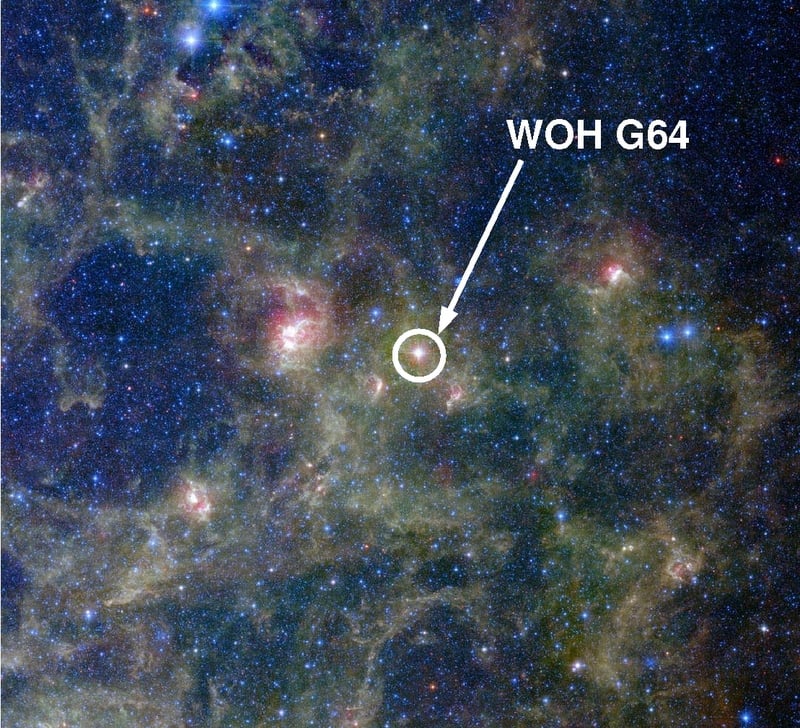For the first time, a team of astronomers has taken a close-up image of an individual dying supergiant star, WHO G64, in a neighboring galaxy, the Large Magellanic Cloud, about 160,000 light years distant. Researchers have been trying for decades to look closely at how aging stars lose a considerable amount of their mass before they go supernova. But this is difficult because of the great distances. However, by combining two 8.2m telescopes in Chile as an interferometer, they achieved the resolving power of a 60-m telescope. With this super-sharp view, they discovered that the dying supergiant star is developing a thick dust torus around it. They estimated that the star had an initial mass of about 25 times the mass of our sun. But now, the star is shedding material so rapidly that it has already lost 10 - 40% of its initial mass and is speeding toward its final fate as a supernova.
When a star becomes older, it ejects a huge amount of material and gets embedded in a thick envelope, in which a variety of molecules and dust form. Even with the world's largest optical telescopes with 8 - 10m diameters, it is still difficult to take a close-up shot of aging stars closest to Earth, let alone those outside our own galaxy, the Milky Way.
Using two or more telescopes combined as an "interferometer" provides a way to achieve much higher resolving power than an individual telescope alone. The ESO's Very Large Telescope Interferometer (VLTI) in Chile is one of the largest interferometers, combining two or three 8.2m telescopes. A team of researchers at Max Planck Institute for Radio Astronomy (MPIfR) and the European Southern Observatory (ESO) these instruments at mid-infrared wavelengths, which is ideal for observing the thermal radiation from the dust envelope heated by the star.
"For the first time we could take a close-up view of an individual star outside our Galaxy, and this is an important first step to understand how dying stars in other galaxies differ from their counterparts in our Milky Way", says Keiichi Ohnaka at the MPIfR. "We discovered that the dying supergiant star WOH G64 is surrounded by a thick dust torus which sort of looks like a thick bagel by comparing it with detailed theoretical modeling." The diameter of the supergiant star is as large as the orbit of Saturn in the solar system. The dimensions of the whole torus are considerably larger: the inner edge of the torus is at 120 AU ("Astronomical Units", corresponding to the distance of the Earth from the sun), the total size of the torus reaches almost one light year.
In the next few thousand or ten thousand years, WHO G64 will explode as a supernova. Judging from its mass of WOH G64, it will become visible to the unaided eye in the southern hemisphere. The supernova explosion will blow away most of the mass of WOH G64, which will then be recycled as the building blocks for stars of the next generation.
Original News Source: Max Plank Institute
 Universe Today
Universe Today
